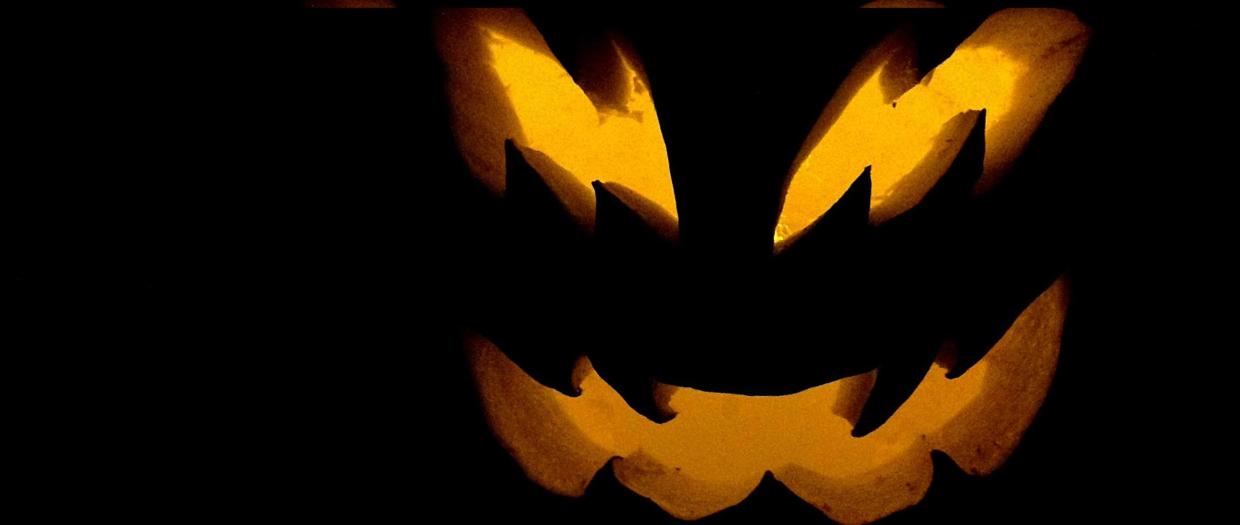Dealing with the Darker Aspects of Halloween

August 11th, 2014
As a drama therapist, I hear a lot of stories. This time of year many of those stories can include dark, violent, solitary and monstrous elements. It’s the season for people wearing costumes in public and a time to see houses adorned with decorations – but many costumes and decorations have macabre or morbid aspects. It would not be at all surprising for anyone with children or working with children to find the characters and stories and images that come out around this time to be a bit disturbing. You may be asking, “What is my child going to make of this?” As a Drama Therapist, I find myself asking, “What are the stories we tell ourselves about these things, what are the stories children are trying to form, and what understanding can we shape together?”
First, we have to separate our own understanding and interpretations from what children may be attempting to understand. The next step is to look, listen, and ask. Does the child seem amused, confused, frightened, bored, etc.? Depending on the age of the child, he or she may not have yet developed a language to describe such feelings. When asking a child how s/he feels, you can supply words and give the child options to select from. The third step requires us to be willing to play within the child’s understanding while providing reassurance of safety.
All the costumes and decorations can be an opportunity  to confront fear (death, destruction, disfigurement, brokenness, exile or outcast status, or hurting others) and aspire to power and mastery (superpowers including transformation, armor, shields, weapons, and magic wands). The costumes, decorations, and stories made from them may express and hold these feelings.
to confront fear (death, destruction, disfigurement, brokenness, exile or outcast status, or hurting others) and aspire to power and mastery (superpowers including transformation, armor, shields, weapons, and magic wands). The costumes, decorations, and stories made from them may express and hold these feelings.
Author Denyse Beaudet, Ph.D. has described three ways of dealing with monsters: Combat (attack/destruction, defense/protection), Taming (containing and training), and Being Engulfed by it (“Ugh, the zombie ate my brain”).
Reassuring a child that s/he is safe when confronting scary costumes or decorations can happen by restating or grounding everything in the rules of here and now reality. Some examples:

- We/they are people who are pretending.
- They are playing dress-up/dressing up their house.
- It is safe for us to look at them, but we don’t HAVE to.
- We are together and we are safe).
Another way of establishing safety is by setting the rules of imaginative play, such as“nothing can hurt us inside our energy force field.”
You may be familiar with two other coping techniques for horrifying fear and horrifying despair depicted in J.K. Rowling’s Harry Potter and the Prisoner of Azkaban:
1) To counter monsters of fear - change the context around them (Riddikulus Charm). Ask questions that invite ridiculous speculation thereby surrounding scary with silly. Example: “What would that werewolf look like with a poodle haircut?” “If the all monsters got together for a sleep-over what different pajamas would they wear?” There are also more reality-based asking questions such as, “How do you go to the bathroom wearing a costume like that?”
2) To counter monsters of despair - concentrate on the things that make you really happy (Patronus Charm), and make a protecting spirit out of these happy thoughts. “This is like when we went to Disneyland or Great America and we saw characters dressed up there too.” Point out where you see or recall favorite colors, characters, etc.
The child sees the monster but you can shape the landscape that contains it and the picture frame that surrounds all of it. You are the one who can help organize all this information for the child.

Not everything must have a happy ending. Listen to the story the child wants to tell. If an ending seems troubling, don’t have to reject it out of hand. Respond emotionally to it or help point toward positives that may come out of a seemingly negative story ending. You can also offer alternative endings. Our shared cultural experience of movies now includes alternate endings, deleted scenes, and blooper scenes that give a us all a way to introduce humor or different possibilities and “What if…” scenarios.
Most importantly you are there - to listen, to offer explanations, to share a story. This time of year provides us with opportunities to look at fears and surround them with love.
Beaudet, Denyse. (1991). Encountering the monster in children’s dreams: combat, taming, and engulfment. Quadrant, 24 (1), 65-73.
Haen, Craig and Brannon, Kenneth H. (2002). Superheroes, monsters, and babies: roles of strength, destruction, and vulnerability for emotionally disturbed boys. The Arts in Psychotherapy, (29), 31-40.
